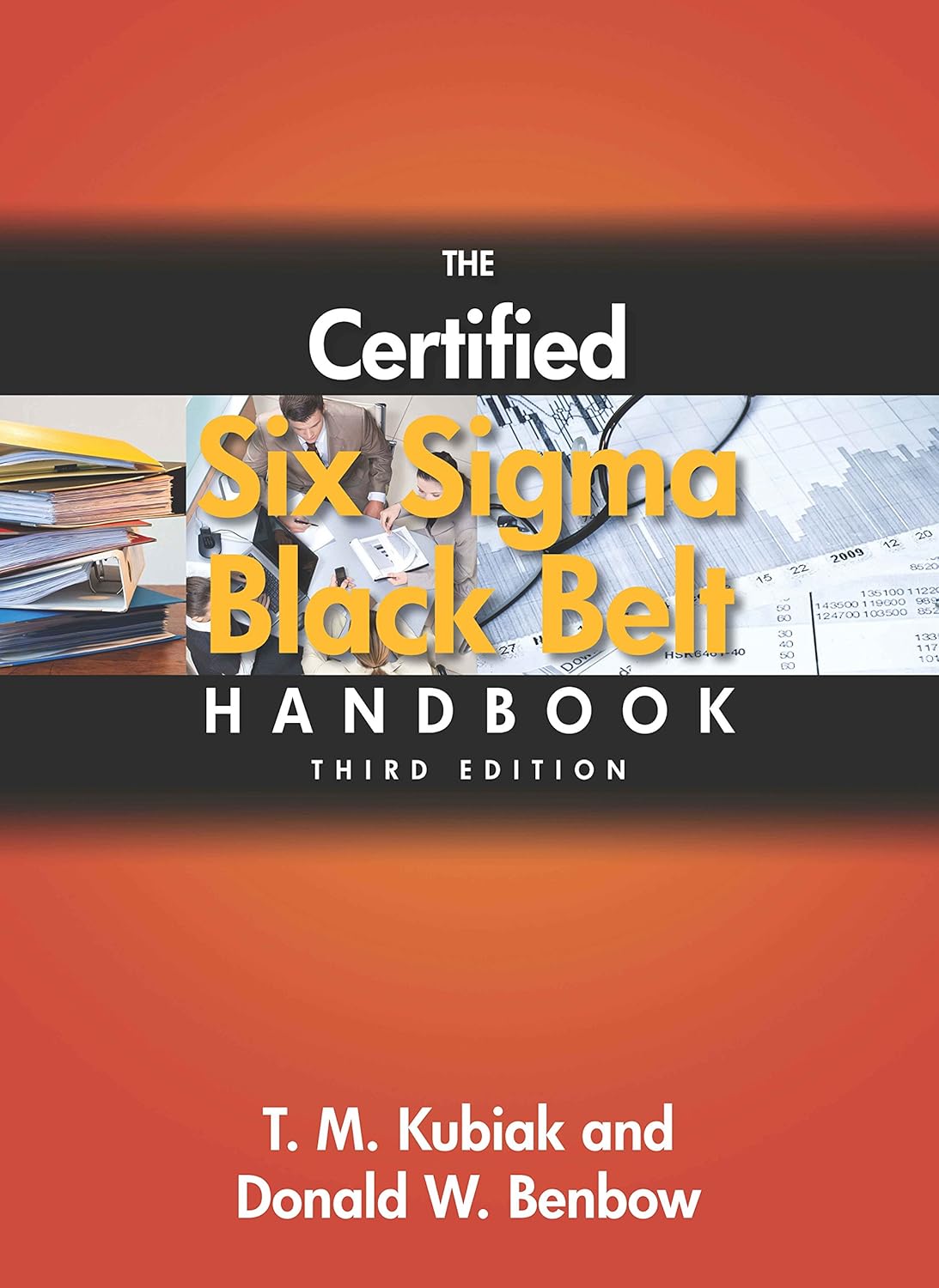BOOKZONE
The Six Sigma Black Belt Handbook 3rd Edition (Paperback)
Author : T.M. Kubiak and W.Benbow Donald
Binding:Paperback
Publication Date
Publisher :
SKU:9789352865581
Bulk Discount Get Exta 5% upto 10%
Share

"The best Six Sigma black belt handbook has been fully revised, updated, and expanded!This third edition has been updated to reflect the most recent ASQ Six Sigma Black Belt Body of Knowledge (BOK), released in 2015. Among the many additions are: more exercises, particularly to address the more difficult concepts; new tables and figures to clarify concepts; new content between the DMAIC parts of the book (that is, Parts IVVII) to help smooth the transition between phases and to better relate the underlying concepts of the DMAIC methodology; and more content that ensures that the black belt is fully trained in concepts taught to the green belt.The primary audience for this work is the individual who plans to prepare to sit for the Six Sigma black belt certification examination. A secondary audience for the handbook is the quality and Six Sigma professional who would like a relevant Six Sigma reference book.The accompanying CD contains 180 supplementary problems covering each chapter and a 150-question simulated exam that has problems distributed among chapters per the scheme published in the BOK. New to this edition, the problems are now fully worked so that readers can more readily follow the problem-solving process.Part I: Organization-Wide Planning and DeploymentChapter 1: Organization-Wide ConsiderationsChapter 2: LeadershipPart II: Organizational Process Management and MeasuresChapter 3: Impact on Stakeholders .Chapter 4: Benchmarking .Chapter 5: Business Measures .Part III: Team ManagementChapter 6: Team FormationChapter 7: Team Facilitation .Chapter 8: Team Dynamics .Chapter 9: Team Training .Part IV: DefineChapter 10: Voice of the CustomerChapter 11: Business Case and Project CharterChapter 12: Project Management (PM) Tools .Chapter 13: Analytical ToolsPart V: MeasureChapter 15: Data CollectionChapter 16: Measurement Systems .Chapter 17: Basic StatisticsChapter 18: ProbabilityChapter 19: Process CapabilityPart VI: AnalyzeChapter 20: Measuring and Modeling Relationships between VariablesChapter 21: Hypothesis Testing .Chapter 22: Failure Mode and Effects Analysis (FMEA) .Chapter 23: Additional Analysis MethodsPart VII: ImproveChapter 24: Design of Experiments (DOE) .Chapter 25: Lean MethodsChapter 26: Implementation .Part VIII: ControlChapter 27: Statistical Process ControlChapter 28: Other Controls .Chapter 29: Maintain ControlsChapter 30: Sustain Improvements .Part IX: Design for Six Sigma (DFSS) Framework and MethodologiesChapter 31: Common DFSS MethodologiesChapter 32: Design for X (DFX) .Chapter 33: Robust Designs .Chapter 34: Retained KnowledgePart X: Appendices


